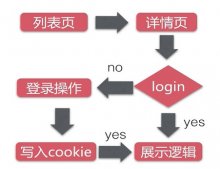ThreadPoolExecutor参数说明
一、ThreadPoolExecutor核心参数说明
1、corePoolSize:核心线程数
* 核心线程会一直存活,及时没有任务需要执行
* 当线程数小于核心线程数时,即使有线程空闲,线程池也会优先创建新线程处理
* 设置allowCoreThreadTimeout=true(默认false)时,核心线程会超时关闭
2、queueCapacity:任务队列容量(阻塞队列)
* 当核心线程数达到最大时,新任务会放在队列中排队等待执行
3、maxPoolSize:最大线程数
* 当线程数>=corePoolSize,且任务队列已满时。线程池会创建新线程来处理任务
* 当线程数=maxPoolSize,且任务队列已满时,线程池会拒绝处理任务而抛出异常
4、 keepAliveTime:线程空闲时间
* 当线程空闲时间达到keepAliveTime时,线程会退出,直到线程数量=corePoolSize
* 如果allowCoreThreadTimeout=true,则会直到线程数量=0
5、allowCoreThreadTimeout:允许核心线程超时
6、rejectedExecutionHandler:任务拒绝处理器
* 两种情况会拒绝处理任务:
- - 当线程数已经达到maxPoolSize,切队列已满,会拒绝新任务
- - 当线程池被调用shutdown()后,会等待线程池里的任务执行完毕,再shutdown。如果在调用shutdown()和线程池真正shutdown之间提交任务,会拒绝新任务
* 线程池会调用rejectedExecutionHandler来处理这个任务。如果没有设置默认是AbortPolicy,会抛出异常
* ThreadPoolExecutor类有几个内部实现类来处理这类情况:
-
-
AbortPolicy丢弃任务,抛运行时异常 -
-
CallerRunsPolicy执行任务 -
-
DiscardPolicy忽视,什么都不会发生 -
-
DiscardOldestPolicy从队列中踢出最先进入队列(最后一个执行)的任务
* 实现RejectedExecutionHandler接口,可自定义处理器
二、ThreadPoolExecutor执行顺序
线程池按以下行为执行任务
1. 当线程数小于核心线程数时,创建线程。
2. 当线程数大于等于核心线程数,且任务队列未满时,将任务放入任务队列。
3. 当线程数大于等于核心线程数,且任务队列已满
- -1 若线程数小于最大线程数,创建线程
- -2 若线程数等于最大线程数,抛出异常,拒绝任务
三、ThreadPoolExecutor如何设置参数
1、默认值
* corePoolSize=1 * queueCapacity=Integer.MAX_VALUE * maxPoolSize=Integer.MAX_VALUE * keepAliveTime=60s * allowCoreThreadTimeout=false * rejectedExecutionHandler=AbortPolicy()
2、如何来设置
* 需要根据几个值来决定
-
-
tasks:每秒的任务数,假设为1000 -
-
taskcost:每个任务花费时间,假设为0.1s -
-
responsetime:系统允许容忍的最大响应时间,假设为1s
* 做几个计算
- corePoolSize = 每秒需要多少个线程处理?
* 一颗CPU核心同一时刻只能执行一个线程,然后操作系统切换上下文,核心开始执行另一个线程的代码,以此类推,超过cpu核心数,就会放入队列,如果队列也满了,就另起一个新的线程执行,所有推荐:corePoolSize = ((cpu核心数 * 2) + 有效磁盘数),java可以使用Runtime.getRuntime().availableProcessors()获取cpu核心数
- queueCapacity = (coreSizePool/taskcost)*responsetime
* 计算可得 queueCapacity = corePoolSize/0.1*1。意思是队列里的线程可以等待1s,超过了的需要新开线程来执行
* 切记不能设置为Integer.MAX_VALUE,这样队列会很大,线程数只会保持在corePoolSize大小,当任务陡增时,不能新开线程来执行,响应时间会随之陡增。
- maxPoolSize = (max(tasks)- queueCapacity)/(1/taskcost)
* 计算可得 maxPoolSize = (1000-corePoolSize)/10,即(每秒并发数-corePoolSize大小) / 10
* (最大任务数-队列容量)/每个线程每秒处理能力 = 最大线程数
- - rejectedExecutionHandler:根据具体情况来决定,任务不重要可丢弃,任务重要则要利用一些缓冲机制来处理
- - keepAliveTime和allowCoreThreadTimeout采用默认通常能满足
ThreadPoolExecutor参数allowCoreThreadTimeOut
ThreadPoolExecutor的执行流程有一点可能被吐槽过,就是只有缓存队列已经满了的时候才会使用到maxPoolSize创建新的线程.也就是说如果corePoolSize设为0的时候,要等到队列满了,才会创建线程去执行任务
之前有被问到,希望没有任务的时候线程池里的线程可以停掉。可能对性能和资源有过考虑的人都会想到这个问题吧
今天看JDK源码的时候发现了ThreadPoolExecutor在1.6的时候已经支持了
allowCoreThreadTimeOut参数就是为此设计的
|
1
2
3
4
5
6
7
8
9
10
11
12
13
14
15
16
17
18
19
20
21
22
23
24
25
26
|
/** * Sets the policy governing whether core threads may time out and * terminate if no tasks arrive within the keep-alive time, being * replaced if needed when new tasks arrive. When false, core * threads are never terminated due to lack of incoming * tasks. When true, the same keep-alive policy applying to * non-core threads applies also to core threads. To avoid * continual thread replacement, the keep-alive time must be * greater than zero when setting {@code true}. This method * should in general be called before the pool is actively used. * * @param value {@code true} if should time out, else {@code false} * @throws IllegalArgumentException if value is {@code true} * and the current keep-alive time is not greater than zero * * @since 1.6 */public void allowCoreThreadTimeOut(boolean value) { if (value && keepAliveTime <= 0) throw new IllegalArgumentException("Core threads must have nonzero keep alive times"); if (value != allowCoreThreadTimeOut) { allowCoreThreadTimeOut = value; if (value) interruptIdleWorkers(); }} |
在ThreadPoolExecutor构造函数的注释上也有明确说明:corePoolSize 的数量会一直保持,即使这些线程是空闲的,除非设置了allowCoreThreadTimeOut
|
1
2
3
4
5
6
7
8
9
10
11
12
13
14
15
16
17
18
19
20
21
22
23
24
25
26
27
28
29
30
31
32
|
/** * Creates a new {@code ThreadPoolExecutor} with the given initial * parameters and default thread factory and rejected execution handler. * It may be more convenient to use one of the {@link Executors} factory * methods instead of this general purpose constructor. * * @param corePoolSize the number of threads to keep in the pool, even * if they are idle, unless {@code allowCoreThreadTimeOut} is set * @param maximumPoolSize the maximum number of threads to allow in the * pool * @param keepAliveTime when the number of threads is greater than * the core, this is the maximum time that excess idle threads * will wait for new tasks before terminating. * @param unit the time unit for the {@code keepAliveTime} argument * @param workQueue the queue to use for holding tasks before they are * executed. This queue will hold only the {@code Runnable} * tasks submitted by the {@code execute} method. * @throws IllegalArgumentException if one of the following holds:<br> * {@code corePoolSize < 0}<br> * {@code keepAliveTime < 0}<br> * {@code maximumPoolSize <= 0}<br> * {@code maximumPoolSize < corePoolSize} * @throws NullPointerException if {@code workQueue} is null */ public ThreadPoolExecutor(int corePoolSize, int maximumPoolSize, long keepAliveTime, TimeUnit unit, BlockingQueue<Runnable> workQueue) { this(corePoolSize, maximumPoolSize, keepAliveTime, unit, workQueue, Executors.defaultThreadFactory(), defaultHandler); } |
当然,在Executors的静态工厂里面的newCachedThreadPool提供了另外一种思路
|
1
2
|
coreSize为0SynchronousQueue最多只能有一个任务在队列里面 |
也就是说这个线程池的任务会被立即分配一个线程去处理,如果没有空闲的线程会立即创建线程。
在空闲的时候,线程数量会减少直至为0,这一点倒是满足了要求。可是队列中最多只会缓存一个任务,当任务的处理速度慢于任务进入线程池的速度时,线程数量就会不断膨胀。如果maxPoolSize设置成一个比较小的数字时,可能就会有大量任务被拒绝策略处理。
所以正如注释中所说,newCachedThreadPool只适合于任务处理速度很快的场景下。比如做一些计算,不需要依赖其它服务
|
1
2
3
4
5
6
7
8
9
10
11
12
13
14
15
16
17
18
19
20
|
/** * Creates a thread pool that creates new threads as needed, but * will reuse previously constructed threads when they are * available. These pools will typically improve the performance * of programs that execute many short-lived asynchronous tasks. * Calls to {@code execute} will reuse previously constructed * threads if available. If no existing thread is available, a new * thread will be created and added to the pool. Threads that have * not been used for sixty seconds are terminated and removed from * the cache. Thus, a pool that remains idle for long enough will * not consume any resources. Note that pools with similar * properties but different details (for example, timeout parameters) * may be created using {@link ThreadPoolExecutor} constructors. * * @return the newly created thread pool */ public static ExecutorService newCachedThreadPool() { return new ThreadPoolExecutor(0, Integer.MAX_VALUE, 60L, TimeUnit.SECONDS, new SynchronousQueue<Runnable>()); |
总结
以上为个人经验,希望能给大家一个参考,也希望大家多多支持服务器之家。
原文链接:https://blog.csdn.net/sinat_15946141/article/details/107951917















